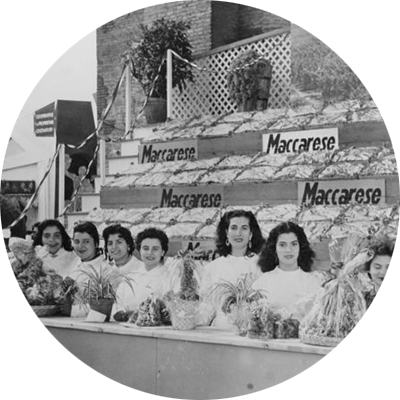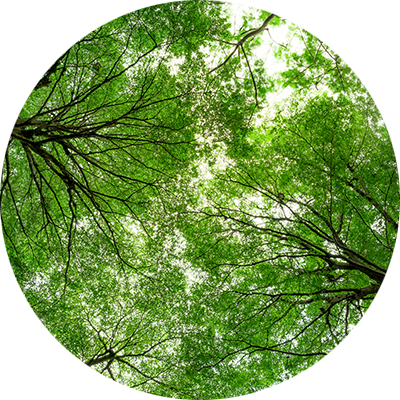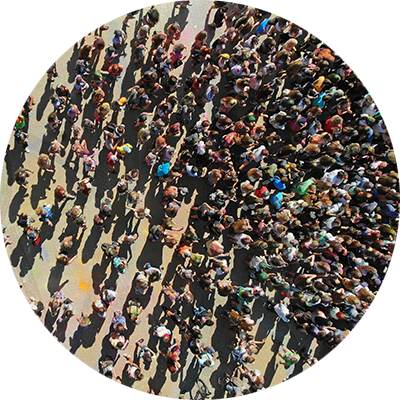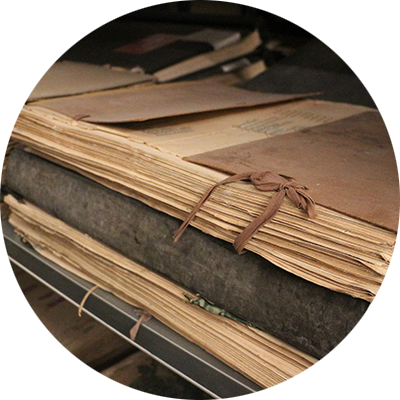The Economy of Fiumicino’s Territory
The flat lands of the Fiumicino municipality have undergone both hydraulic and integrated reclamation efforts between the 19th and 20th centuries. These interventions transformed the area into a plain crossed by shallow artificial channels suitable for agricultural use. The agricultural vocation of the hilly areas to the north of the municipality dates back to the Etruscan and Roman periods.
These lands were originally vast estates owned by large Roman noble families since the fall of the Western Roman Empire. After the agrarian reform by the Maremma Authority in the 1950s, some of these latifundia were divided into agricultural plots of 10-15 hectares, leading to the settlement of various localities in this extensive area. Notable exceptions include the Maccarese area, with its Maccarese Estate (owned by the Institute for Industrial Reconstruction from 1929 to 1998 and later owned by the Benetton Group), the land of Torre in Pietra since 1926 (part of the Torre in Pietra Estate, still existing though fragmented), and the agricultural estate of Palidoro (owned by the Pio Istituto Santo Spirito).
Population growth significantly accelerated from the 1960s, coinciding with the construction and operation of the Leonardo da Vinci Airport and the development of coastal settlements mainly for tourism. The construction sector became a key driver of the local economy starting from this period and remains one of the major economic contributors to the municipality today.
Aside from the airport-related industries, there are no major industrial companies in the area. The primary economic sectors are agriculture, livestock, fishing, shipbuilding, tourism, and crafts. However, the craft sector consists mainly of small and medium-sized enterprises providing basic services to the local population, and there are no large-scale craft businesses with significant economic impact in the Fiumicino territory.
There are approximately 3,700 active businesses in the municipality, employing over 32,000 workers, with only 1.75% of workers being external (from the IX General Census of Industry and Services – 2011). Nevertheless, in recent years, there has been an increase in businesses and the number of employees across various sectors (excluding agriculture), primarily due to diversification in the types of businesses operating in the area.
Agriculture and Livestock
According to the VI National Agricultural Census, the sectors that contribute the most to the value of agricultural production in Fiumicino are horticulture and livestock farming.
Over the past few decades, there has been a decline in the number of agro-livestock businesses. However, there has been an increase in the levels of specialization and professionalization of workers and/or farm managers. The agricultural and livestock production structure, with few exceptions, is still organized around the family unit. More than half of the businesses in Fiumicino are led by managers who are also the landowners, a phenomenon more pronounced in the agricultural territories of Cerveteri than in those of Fiumicino.
In 91.3% of Fiumicino’s agricultural businesses, the farm manager is directly involved in the business, indicating the use of family labor, which is in line with national data and that of the entire Lazio region.
There are 391 agricultural businesses in Fiumicino, and the utilized agricultural area (UAA) accounts for 83.16% of the total agricultural area (SAT). This is a significant figure, especially considering the area is adjacent to a major metropolis like Rome.

It is interesting to note that most of the businesses in Fiumicino are very small, primarily individual enterprises, which confirms the involvement of family members in the agricultural activities. The cultivated area of each business rarely exceeds 5 hectares, and it is not uncommon to find situations where income from the business is a secondary source of livelihood, with farming being, at most, an inherited activity from a parent.
The livestock sector is a key component of the local economy. For example, in the municipality of Fiumicino alone, the number of cattle raised is 14,719 units.
For a detailed breakdown of the type of livestock farming and the number of animals raised, a graph is provided below:
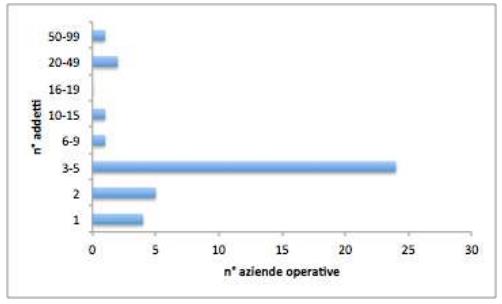
Operational businesses in the municipality of Fiumicino (source: ISTAT 2011) in the agriculture, forestry, and fishing sector, classified by number of employees
The fact remains that, among the various livestock sectors, cattle farming plays a primary role in both milk and meat production. However, there is still a gap in local processing and transformation activities for these products.
Agricultural and livestock activities are among the main causes of water pollution, soil instability, and loss of biodiversity. They are also responsible for reducing the welfare of livestock, which indirectly affects the safety of food chains (European Food Safety Authority – EFSA and Council Directive 98/58/EC).
When managed appropriately, agricultural and livestock practices can have a vital environmental role in preserving the territory. These practices can contribute to reducing pollution, soil degradation, and water contamination, while ensuring a sustainable capacity for producing food goods.
Given the importance of agriculture for the region, it would be beneficial to develop a system that allows the agricultural sector to expand beyond its primary function. This could include other significant roles such as occupational, social, environmental, landscape, and service production. In this context, agritourism and agri-education play a primary role in supporting sustainable development.
Typical Products
The Fiumicino carrot (Daucus carota – Fiumicino variety) has been in the process of obtaining a Protected Geographical Indication (PGI) since January 2020, with efforts from Maccarese SpA, ARSIAL, and the Municipality of Fiumicino. Although the carrot can adapt to various climates, this specific variety thrives in sandy, loose soils, making the reclaimed plains, particularly those of Maccarese, its ideal growing area.
The region also boasts three wines with notable recognitions. The land morphology, with hills descending towards the sea and the beneficial ventilation from sea breezes, makes it particularly suited for viticulture. While less known than other wine-producing areas in the province of Rome, the winemaking tradition in the hilly and pre-hilly areas of Fiumicino dates back to ancient times, as evidenced by archaeological and artistic documentation related to the history and mythology of the Etruscans. The Etruscans are known to have practiced viticulture, particularly the technique of “vite maritata,” where vines are supported on structures, a method still widely used in central and southern Italy today. Finds, wine amphorae, and archaeological discoveries attest to the importance of agriculture, which was practiced as early as by the ancient Tyrrhenian peoples. The Etruscans later developed and expanded this cultivation.
Wine was considered a sacred and important product, and this respect for wine was passed down to the Romans, who celebrated its qualities. The poet Martial praised a wine “that one could never stop drinking,” while Pliny the Elder recommended wine from the vineyards that the ancient Etruscans planted in the region between Cerveteri and Tarquinia.
The youngest wine designation, Costa Etrusca Romana I.G.T., was approved in 2011 and covers the widest variety of wine types. The production area includes the entire municipalities of Cerveteri and Fiumicino. The white wine can be dry, semi-sweet, sweet, or aromatic, made primarily from Malvasia puntinata, Vermentino, Chardonnay, Fiano, and other local white grape varieties. Each of the primary grape varieties used in white wine production has its own wine name, provided that the grape variety makes up at least 85% of the blend.
For red wine, made exclusively in a dry style, the principal grape varieties are Montepulciano, Sangiovese, Merlot, and, in smaller proportions, other local varieties. Specific red wines also take the name of the grape variety used predominantly in their production, including Costa Etrusca Romana Cabernet Sauvignon, Merlot, Syrah, and Sangiovese.
Agriculture and Livestock with Organic Methods
The production and consumption of organic food has positive effects on human life by reducing the negative impacts of agricultural activities on water, air, soil, and biodiversity. It also helps decrease water, energy, and fertilizer consumption (Ciccarese L. e Silli V. in Spazio Aperto, DOI 10.12910/EAI2015-060 “Agricoltura biologica, una scelta giusta per l’ambiente, la sicurezza alimentare e la salute?”).
In line with national trends, the organic agriculture sector has experienced significant growth in recent years. As of the first half of 2018, in the areas of the CFCPER (Centre for the conservation and valorization of eco-sustainable Roman heritage), over 4,700 hectares are farmed by more than 50 businesses. The number of organic farms has more than doubled in less than a decade.
Although much work remains to be done, the average proportion of certified organic farmland compared to the total agricultural land of municipalities is nearly 25% (compared to 22% in the Lazio Region). The network of operators that make up the Biodistretto Etrusco Romano accounts for over 20% of the total organic land in the area.
The economic potential for the organic sector is substantial, as demand grows in modern distribution channels, traditional shops, home delivery, and e-commerce. Additionally, sales through private restaurants and public canteens can represent a significant market share.
Biodistretto Etrusco Romano (Etruscan-Roman Biodistrict) and the “Regional Ecological Network”
Within the Biodistretto Etrusco Romano, agricultural businesses play an essential role in preserving the elements of the natural and agricultural landscape and in maintaining the integrity of areas vital for ecological connectivity. This includes:
- Natural reservoirs, ecological corridors, and riparian vegetation.
- Mobility routes for wildlife species and the preservation of plant formations.
- Conservation of non-intensive agricultural environments.
Interview with Massimiliano Mattiuzzo, President of the Biodistretto Etrusco Romano
Interview with Claudio Caramadre, agricultural entrepreneur and member of the Biodistretto Etrusco Romano
Interview with Andrea Del Gallo, agricultural entrepreneur and member of the Biodistretto Etrusco Romano
Tourism
Despite the overwhelming dominance of tourism in the capital (Rome), which accounts for 80% of the total tourist presence in the Lazio Region, the tourism sector in Fiumicino represents a significant economic contribution. The area’s rich natural resources, its notable archaeological heritage, the diversity of local food and wine products, and the excellent offerings for sports enthusiasts make Fiumicino an attractive destination for both national and international tourists.
From just 17 establishments in 1997 providing tourist accommodations, the number of accommodations in Fiumicino grew to nearly 300 by 2018, with the number of beds rising from approximately 1,000 in 1997 to over 6,400.
Beach Tourism
For the Municipality of Fiumicino, the sea plays a strategic role in the economy. Sustainable management requires a balance between environmental and social protection and the development of economic activities, particularly in the tourist and recreational sectors.
A large part of the coastal area is freely accessible for swimming. With its 24 km of coastline, Fiumicino is one of the most developed areas for beach tourism in Lazio. The municipality is home to many beach resorts and 34 concessions. In 2019, Fiumicino ranked first in the entire region for beach concessions.
Although the beach tourism sector is significant, its productivity is strongly seasonal. To overcome this limitation, regional policies for the development of coastal tourism have introduced measures that allow for the year-round use of resources. Thanks to the destagionalization of activities, municipalities can authorize the use of temporary structures (such as cabins, bungalows, etc.) throughout the year. Additionally, “accessory activities” have been redefined: beyond food and beverage services, musical entertainment, and the sale of newspapers, books, and beach items, beach establishments can now host art exhibitions, wellness activities, non-competitive nautical sports, and boat rentals (according to the Regional Plan for the Use of Coastal Areas for Tourism and Recreation).
This increased entrepreneurial flexibility is expected to lead to a significant rise in revenue from beach tourism.
Gastronomic Tourism
The Bed & Breakfast and Agritourism models are a perfect blend of the philosophy of good living and the rediscovery of local identity and traditions. In the Municipality of Fiumicino, these activities are represented by more than 150 accommodation establishments. The development of agricultural land for tourism purposes can become an important economic aspect for rural populations, thanks to the new tourist model of “diffuse hospitality.” In this sense, gastronomic tourism represents one of the most important drivers of development. The Strada dei Vini e dei Prodotti Tipici delle Terre Etrusco Romane (Wine and Typical Products Road of the Etrusco-Roman Lands) exemplifies the fertility of the area. In addition to the wines and exceptional vegetables previously mentioned, livestock farming also finds its distinctive feature in the Vitellone della Maremma, which grazes in the plains of Fiumicino and the Cerite hills.
Cultural Tourism
The wealth and importance of historical and archaeological sites make Fiumicino a prime location for cultural and identity tourism. Archaeological sites, whether prehistoric or those that testify to the advent of the Etruscan and Roman civilizations, as well as those related to more recent history, are visited primarily by an older demographic and, especially, by day-trippers, influenced by the major attraction that is Rome. To enhance this sector, it is essential to develop a more competitive offer that expands the tourist target; through the creation of territorial and/or thematic circuits and the enhancement of infrastructure, a tourist promotion system should be developed to attract primarily families and younger generations.
Green Tourism
The wealth of natural sites and habitats in the area makes “green tourism” increasingly important. It also contributes to raising environmental awareness, promoting the protection of ecosystems, and respecting local culture. In Fiumicino, notable green tourism activities include birdwatching and cycling tourism. These activities are mostly enjoyed by day-trippers, but thanks to the structures and infrastructure that are being built or are in the planning stages, they are expected to become significant sources of income for the two municipalities. The development of green tourism should be designed with sustainability in mind, aiming at the protection and enhancement of the territory.
Despite the overwhelming dominance of tourism in Rome (which accounts for 80% of the tourist arrivals in the Lazio region), the tourism sector remains a significant economic force in Fiumicino. The many natural resources, notable archaeological offerings, diverse food and wine products, and excellent sports opportunities make this area a highly attractive destination for both national and international tourists.
In Fiumicino alone, the number of tourist accommodation establishments has grown from 17 in 1997 to almost 300 in 2018, increasing the number of beds from about 1,000 in 1997 to over 6,400.
The Economy of Fiumicino’s Territory
The flat lands of the Fiumicino municipality have undergone both hydraulic and integrated reclamation efforts between the 19th and 20th centuries. These interventions transformed the area into a plain crossed by shallow artificial channels suitable for agricultural use. The agricultural vocation of the hilly areas to the north of the municipality dates back to the Etruscan and Roman periods.
These lands were originally vast estates owned by large Roman noble families since the fall of the Western Roman Empire. After the agrarian reform by the Maremma Authority in the 1950s, some of these latifundia were divided into agricultural plots of 10-15 hectares, leading to the settlement of various localities in this extensive area. Notable exceptions include the Maccarese area, with its Maccarese Estate (owned by the Institute for Industrial Reconstruction from 1929 to 1998 and later owned by the Benetton Group), the land of Torre in Pietra since 1926 (part of the Torre in Pietra Estate, still existing though fragmented), and the agricultural estate of Palidoro (owned by the Pio Istituto Santo Spirito).
Population growth significantly accelerated from the 1960s, coinciding with the construction and operation of the Leonardo da Vinci Airport and the development of coastal settlements mainly for tourism. The construction sector became a key driver of the local economy starting from this period and remains one of the major economic contributors to the municipality today.
Aside from the airport-related industries, there are no major industrial companies in the area. The primary economic sectors are agriculture, livestock, fishing, shipbuilding, tourism, and crafts. However, the craft sector consists mainly of small and medium-sized enterprises providing basic services to the local population, and there are no large-scale craft businesses with significant economic impact in the Fiumicino territory.
There are approximately 3,700 active businesses in the municipality, employing over 32,000 workers, with only 1.75% of workers being external (from the IX General Census of Industry and Services – 2011). Nevertheless, in recent years, there has been an increase in businesses and the number of employees across various sectors (excluding agriculture), primarily due to diversification in the types of businesses operating in the area.
Agriculture and Livestock
According to the VI National Agricultural Census, the sectors that contribute the most to the value of agricultural production in Fiumicino are horticulture and livestock farming.
Over the past few decades, there has been a decline in the number of agro-livestock businesses. However, there has been an increase in the levels of specialization and professionalization of workers and/or farm managers. The agricultural and livestock production structure, with few exceptions, is still organized around the family unit. More than half of the businesses in Fiumicino are led by managers who are also the landowners, a phenomenon more pronounced in the agricultural territories of Cerveteri than in those of Fiumicino.
In 91.3% of Fiumicino’s agricultural businesses, the farm manager is directly involved in the business, indicating the use of family labor, which is in line with national data and that of the entire Lazio region.
There are 391 agricultural businesses in Fiumicino, and the utilized agricultural area (UAA) accounts for 83.16% of the total agricultural area (SAT). This is a significant figure, especially considering the area is adjacent to a major metropolis like Rome.

It is interesting to note that most of the businesses in Fiumicino are very small, primarily individual enterprises, which confirms the involvement of family members in the agricultural activities. The cultivated area of each business rarely exceeds 5 hectares, and it is not uncommon to find situations where income from the business is a secondary source of livelihood, with farming being, at most, an inherited activity from a parent.
The livestock sector is a key component of the local economy. For example, in the municipality of Fiumicino alone, the number of cattle raised is 14,719 units.
For a detailed breakdown of the type of livestock farming and the number of animals raised, a graph is provided below:

Operational businesses in the municipality of Fiumicino (source: ISTAT 2011) in the agriculture, forestry, and fishing sector, classified by number of employees
The fact remains that, among the various livestock sectors, cattle farming plays a primary role in both milk and meat production. However, there is still a gap in local processing and transformation activities for these products.
Agricultural and livestock activities are among the main causes of water pollution, soil instability, and loss of biodiversity. They are also responsible for reducing the welfare of livestock, which indirectly affects the safety of food chains (European Food Safety Authority – EFSA and Council Directive 98/58/EC).
When managed appropriately, agricultural and livestock practices can have a vital environmental role in preserving the territory. These practices can contribute to reducing pollution, soil degradation, and water contamination, while ensuring a sustainable capacity for producing food goods.
Given the importance of agriculture for the region, it would be beneficial to develop a system that allows the agricultural sector to expand beyond its primary function. This could include other significant roles such as occupational, social, environmental, landscape, and service production. In this context, agritourism and agri-education play a primary role in supporting sustainable development.
Typical Products
The Fiumicino carrot (Daucus carota – Fiumicino variety) has been in the process of obtaining a Protected Geographical Indication (PGI) since January 2020, with efforts from Maccarese SpA, ARSIAL, and the Municipality of Fiumicino. Although the carrot can adapt to various climates, this specific variety thrives in sandy, loose soils, making the reclaimed plains, particularly those of Maccarese, its ideal growing area.
The region also boasts three wines with notable recognitions. The land morphology, with hills descending towards the sea and the beneficial ventilation from sea breezes, makes it particularly suited for viticulture. While less known than other wine-producing areas in the province of Rome, the winemaking tradition in the hilly and pre-hilly areas of Fiumicino dates back to ancient times, as evidenced by archaeological and artistic documentation related to the history and mythology of the Etruscans. The Etruscans are known to have practiced viticulture, particularly the technique of “vite maritata,” where vines are supported on structures, a method still widely used in central and southern Italy today. Finds, wine amphorae, and archaeological discoveries attest to the importance of agriculture, which was practiced as early as by the ancient Tyrrhenian peoples. The Etruscans later developed and expanded this cultivation.
Wine was considered a sacred and important product, and this respect for wine was passed down to the Romans, who celebrated its qualities. The poet Martial praised a wine “that one could never stop drinking,” while Pliny the Elder recommended wine from the vineyards that the ancient Etruscans planted in the region between Cerveteri and Tarquinia.
The youngest wine designation, Costa Etrusca Romana I.G.T., was approved in 2011 and covers the widest variety of wine types. The production area includes the entire municipalities of Cerveteri and Fiumicino. The white wine can be dry, semi-sweet, sweet, or aromatic, made primarily from Malvasia puntinata, Vermentino, Chardonnay, Fiano, and other local white grape varieties. Each of the primary grape varieties used in white wine production has its own wine name, provided that the grape variety makes up at least 85% of the blend.
For red wine, made exclusively in a dry style, the principal grape varieties are Montepulciano, Sangiovese, Merlot, and, in smaller proportions, other local varieties. Specific red wines also take the name of the grape variety used predominantly in their production, including Costa Etrusca Romana Cabernet Sauvignon, Merlot, Syrah, and Sangiovese.
Agriculture and Livestock with Organic Methods
The production and consumption of organic food has positive effects on human life by reducing the negative impacts of agricultural activities on water, air, soil, and biodiversity. It also helps decrease water, energy, and fertilizer consumption (Ciccarese L. e Silli V. in Spazio Aperto, DOI 10.12910/EAI2015-060 “Agricoltura biologica, una scelta giusta per l’ambiente, la sicurezza alimentare e la salute?”).
In line with national trends, the organic agriculture sector has experienced significant growth in recent years. As of the first half of 2018, in the areas of the CFCPER (Centre for the conservation and valorization of eco-sustainable Roman heritage), over 4,700 hectares are farmed by more than 50 businesses. The number of organic farms has more than doubled in less than a decade.
Although much work remains to be done, the average proportion of certified organic farmland compared to the total agricultural land of municipalities is nearly 25% (compared to 22% in the Lazio Region). The network of operators that make up the Biodistretto Etrusco Romano accounts for over 20% of the total organic land in the area.
The economic potential for the organic sector is substantial, as demand grows in modern distribution channels, traditional shops, home delivery, and e-commerce. Additionally, sales through private restaurants and public canteens can represent a significant market share.
Biodistretto Etrusco Romano (Etruscan-Roman Biodistrict) and the “Regional Ecological Network”
Within the Biodistretto Etrusco Romano, agricultural businesses play an essential role in preserving the elements of the natural and agricultural landscape and in maintaining the integrity of areas vital for ecological connectivity. This includes:
- Natural reservoirs, ecological corridors, and riparian vegetation.
- Mobility routes for wildlife species and the preservation of plant formations.
- Conservation of non-intensive agricultural environments.
Interview with Massimiliano Mattiuzzo, President of the Biodistretto Etrusco Romano
Interview with Claudio Caramadre, agricultural entrepreneur and member of the Biodistretto Etrusco Romano
Interview with Andrea Del Gallo, agricultural entrepreneur and member of the Biodistretto Etrusco Romano
Tourism
Despite the overwhelming dominance of tourism in the capital (Rome), which accounts for 80% of the total tourist presence in the Lazio Region, the tourism sector in Fiumicino represents a significant economic contribution. The area’s rich natural resources, its notable archaeological heritage, the diversity of local food and wine products, and the excellent offerings for sports enthusiasts make Fiumicino an attractive destination for both national and international tourists.
From just 17 establishments in 1997 providing tourist accommodations, the number of accommodations in Fiumicino grew to nearly 300 by 2018, with the number of beds rising from approximately 1,000 in 1997 to over 6,400.
Beach Tourism
For the Municipality of Fiumicino, the sea plays a strategic role in the economy. Sustainable management requires a balance between environmental and social protection and the development of economic activities, particularly in the tourist and recreational sectors.
A large part of the coastal area is freely accessible for swimming. With its 24 km of coastline, Fiumicino is one of the most developed areas for beach tourism in Lazio. The municipality is home to many beach resorts and 34 concessions. In 2019, Fiumicino ranked first in the entire region for beach concessions.
Although the beach tourism sector is significant, its productivity is strongly seasonal. To overcome this limitation, regional policies for the development of coastal tourism have introduced measures that allow for the year-round use of resources. Thanks to the destagionalization of activities, municipalities can authorize the use of temporary structures (such as cabins, bungalows, etc.) throughout the year. Additionally, “accessory activities” have been redefined: beyond food and beverage services, musical entertainment, and the sale of newspapers, books, and beach items, beach establishments can now host art exhibitions, wellness activities, non-competitive nautical sports, and boat rentals (according to the Regional Plan for the Use of Coastal Areas for Tourism and Recreation).
This increased entrepreneurial flexibility is expected to lead to a significant rise in revenue from beach tourism.
Gastronomic Tourism
The Bed & Breakfast and Agritourism models are a perfect blend of the philosophy of good living and the rediscovery of local identity and traditions. In the Municipality of Fiumicino, these activities are represented by more than 150 accommodation establishments. The development of agricultural land for tourism purposes can become an important economic aspect for rural populations, thanks to the new tourist model of “diffuse hospitality.” In this sense, gastronomic tourism represents one of the most important drivers of development. The Strada dei Vini e dei Prodotti Tipici delle Terre Etrusco Romane (Wine and Typical Products Road of the Etrusco-Roman Lands) exemplifies the fertility of the area. In addition to the wines and exceptional vegetables previously mentioned, livestock farming also finds its distinctive feature in the Vitellone della Maremma, which grazes in the plains of Fiumicino and the Cerite hills.
Cultural Tourism
The wealth and importance of historical and archaeological sites make Fiumicino a prime location for cultural and identity tourism. Archaeological sites, whether prehistoric or those that testify to the advent of the Etruscan and Roman civilizations, as well as those related to more recent history, are visited primarily by an older demographic and, especially, by day-trippers, influenced by the major attraction that is Rome. To enhance this sector, it is essential to develop a more competitive offer that expands the tourist target; through the creation of territorial and/or thematic circuits and the enhancement of infrastructure, a tourist promotion system should be developed to attract primarily families and younger generations.
Green Tourism
The wealth of natural sites and habitats in the area makes “green tourism” increasingly important. It also contributes to raising environmental awareness, promoting the protection of ecosystems, and respecting local culture. In Fiumicino, notable green tourism activities include birdwatching and cycling tourism. These activities are mostly enjoyed by day-trippers, but thanks to the structures and infrastructure that are being built or are in the planning stages, they are expected to become significant sources of income for the two municipalities. The development of green tourism should be designed with sustainability in mind, aiming at the protection and enhancement of the territory.
Despite the overwhelming dominance of tourism in Rome (which accounts for 80% of the tourist arrivals in the Lazio region), the tourism sector remains a significant economic force in Fiumicino. The many natural resources, notable archaeological offerings, diverse food and wine products, and excellent sports opportunities make this area a highly attractive destination for both national and international tourists.
In Fiumicino alone, the number of tourist accommodation establishments has grown from 17 in 1997 to almost 300 in 2018, increasing the number of beds from about 1,000 in 1997 to over 6,400.

